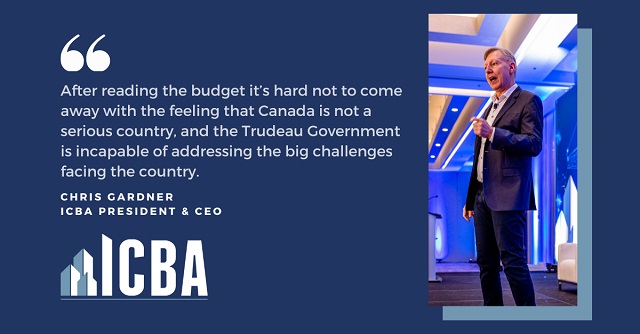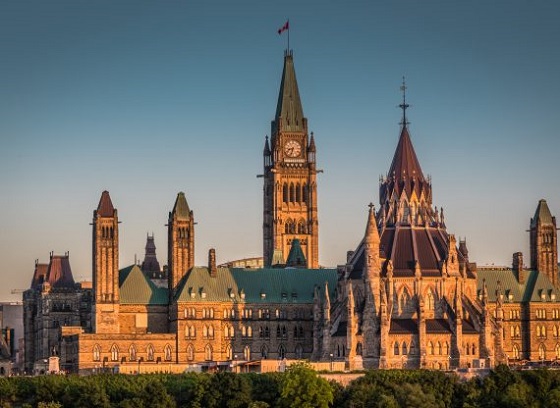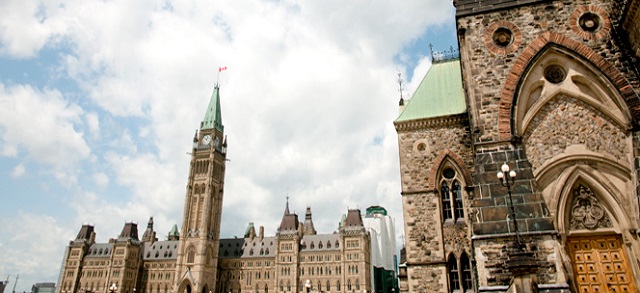Business
Immersive technologies are the future, so how do they benefit industry?

These are exciting times. For those who may be unaware of the advancement of this incredible immersive technology over recent years, you may be surprised by the abundance of benefits virtual reality(VR) and augmented reality(AR) can offer to a wide range of industries. In addition to entertainment and gaming, immersive technologies offer the opportunity to benefit industries such as oil and gas, cleantech, education, manufacturing, agriculture, retail, real estate and many more.
Consider this, when learning new processes or training for a specific position, creating an immersive learning program could advance cognition, engagement and retention of vital information over what could be learned through traditional programs. While we may be still some time away from this being the norm, it is hard to ignore the forward-thinking work going on in this industry.

VizworX is a Calgary based tech company specializing in multiple advanced technologies. While they are one of the great teams at the forefront of this imaginative world of immersive technology, their core mission for all of their clients is simple – they solve problems.
Focusing on key areas, the Vizworx team is well versed in VR, AR, mixed reality(MR), artificial intelligence (AI), internet of things (IoT), geospatial data mapping, biometric evaluation, and custom visualization solutions to name a few. Thankful for the opportunity to discuss this topic with Jeff LaFrenz, CEO of VizworX.
Proud winner of multiple awards over recent years such as the Cross Sectoral Company Success Award from ConvergX in 2020, Outstanding Achievement in Applied Technology by ASTech and The Innovation Award by PTAC in 2019, to name a few. Recently, Jeff was a recipient of the University of Calgary 2020 Alumni Service Award.
– “What is physical and virtual becomes a blurry line at some point in the future” –
Challenging as it is to condense, the incredible applications this immersive technology can have for industrial processes. While this topic could be extrapolated into each individual sector, the overall benefits are still being uncovered as this technology continues to evolve. However, it is important to explore the narrative of what it can offer today.
Infrastructure planning
This can be construed in two ways.
The first. Real estate may integrate immersive technologies at a higher capacity than other industries in the near future. We are aware of 360-degree walking tours, however, imagine having the ability to use a VR headset to be fully immersed in what could be your new home, where you interact with space on a true scale. Moving forward, the experience may prove to be the key to innovating the buying or renting process.
As noted in Engineering.com back in 2016, we now have the ability to walk through a home virtually before any construction begins. If we consider the long term financial risk we all face with building a new home, mitigating any misconstrued requests and ensuring the model is true to the physical, benefits both the future homeowner and project managers. The same can be said for all parties involved in the construction of condo units, including pre-sale to consumers.
The second, industrial facility production.
While it can be difficult to summarize the process included in planning, pre-production, regulations and geo-mapping that goes into the production of infrastructure. With the use of this technology, a large scale project could be first explored through a VR model to engage with what could be the post-production facility, mitigating the risks of inefficient mapping, overhead and problematic regulations.
In theory, creating a virtual tour and geospatial map of an upcoming project could allow for tours, audits and restructuring before production. Mitigating the risk of inefficient planning, saving time and ensuring that the final production model will be cost-effective. With the level of cognition that is possible, we could see a re-evaluation of the process of industrial construction pursued as this technology continues to enhance the user experience.
This type of solution is catered to by the subsidiary of VizworX called EnsureworX. Lead by their CEO, Dustin Wilkes and CFO, Charles Edmonds, this arm of the company specialize in creating immersive engineering review models with their Panoptica solution. If we consider the complexity of certain infrastructure requirements for facilities such as power generation or waste management, the ability to review models, assess ventilation and inform engineers who may have concerns regarding certain functionalities, can allow for a far more streamlined process.
With the amount of capital required for certain industrial facilities, Jeff offers his insight into how Panoptica, or similar review model technology could offer a major advantage when visiting the pre-production stage of an infrastructure review or build.
“One of the challenges every industrial space is running into is data overload. Typically from a human perspective, a lot of what we do is to come from a human perspective of how you present the data to dramatically impact how people understand what it is as well as how they are going to make decisions.” – Jeff LaFrenz, CEO

Foreign Investment / Remote Tours
Evidently, this pandemic continues to confuse and re-calibrate plans to interact with others around the world. As flight schedules continue to be disrupted and to be monitored during a fortnight quarantine post-arrival in a foreign country. Now more than ever, the opportunity to create a virtual demonstration of an early-stage start-up mitigates confusion in regards to travel plans but also lowers overhead for foreign investors to travel to that location for an in-person demonstration.
“Humans by nature have a biological spatial understanding, these technologies leverage that ability to present information that is spatially oriented. I could present you with a rendering of a building, and that would be hard for you to understand, or I could drop you into that building in virtual or augmented reality where you can walk around it and you would get it right away” – Jeff LaFrenz, CEO
One bright light in the ecosystem of innovative technology in the energy space is Eavor Technologies, a closed loop geothermal technology company that has been continuously disrupting the space. With a major push around the world for clean baseload energy that is both dispatchable and scalable, Eavor is a global front runner. Recently featured in Rolling Stone for their new “Harmony” video and insight from their team.
Due to the major disruption in flight schedules, Eavor Technologies created a virtual walking tour of their “Eavor Lite” facility, which is their proof of concept stage site located in Rocky Mountain House, Alberta. To think of the pandemic no longer allowing any convenience for international travel let alone group tours. This solution created an intuitive immersive experience where you as the visitor can walk around and access panels throughout, where their team offers deeper insight into their technology. It can be toured through the Oculus Quest and also through a desktop or smartphone, found here.


(Source: Eavor Technologies Eavor Lite facility, Virtual Reality Tour Announced By Cutting Edge Canadian Energy Tech Company, September 15th 2020)
Operational Training
Cognition and retention of information vary both on the human and technical level. Traditional methods of training employees consist of the use of company assets, written or video material and in some cases exams. While these methods are still widely used today, there is the argument for a declining level of engagement with this type of information and the increase of online activity, thus leading to a lower level of retention.
The solution could very well lie in this immersive technology. There is little data available on the segmented levels of cognition and retention in traditional vs immersive training, however, it is important to note that a high majority of us learn by doing, exactly what an immersive experience offers without the use of expensive equipment that could be better served.
Panoptica contains a suite of tools that leverage mixed reality technologies. Teams can collaborate digitally from anywhere individually as they view models in a true 1:1 scale. By creating a 3D model that can be evaluated, allows for any inefficiencies to become apparent in the design process, thus mitigating time and overhead.

(Source: Medium, “Model Reviews in a Post-COVID Era”, VizworX review model, Carter Yont, published July 28th)
Safety and Emergency Training
One example is training for airline pilots, where they are subject to an immersive training course that will uncover all circumstances where an emergency may arise. Being a passenger on countless flights, I am even glad this technology exists.
Immersive training is not new. Cited from the National Institute for Occupational Safety and Health in Pittsburgh back in 2006, countries such as Germany, Australia and the US came together to explore the benefits to the mining industry. 14 different countries came together to discuss how VR can be employed in the future for research, development and safety training.

(Source: CDC, “Virtual Reality in Mine Training”, National Institute for Occupational Safety and Health, 2006)
While this was years ago, it is a reminder that this technology has been around for some time. As time and education move forward, the quality of the image rendering, functionality and reduction of cost continues to benefit the end-user.
As mentioned, Panoptica can create a 1:1 ratio 3D review model. In addition to playing a major role in planning, safety training programs are an essential part of any industrial process. When you consider the assets and time allocated from senior employees, the cost increases in such a way where those assets and staff could be put to more cost-effective work. The cost of producing an immersive training program that can be utilized from anywhere is minuscule in comparison.
“If you look at the future of where these immersive technologies are going, price points are coming down significantly, and the capabilities are going up significantly. We are going to have this blended environment where employees could walk around an industrial facility and look at a boiler, overlaid on that physical world is all the data and digital information required. What is physical and virtual becomes kind of a blurry line at some point in the future. That is where we want to be, seamless engagement with our environment between physical and virtual worlds.” Jeff LaFrenz, CEO
We are only scratching the surface here, there is still much to uncover in the world of immersive technology in this tech revolution. We can look forward to things such as retail shopping from the comfort of your living room where you can try items on virtually, or even where engineering students will avail of an immersive learning program that could advance cognition and retention to a point where innovation reaches far beyond our wildest aspirations.
I recommend visiting the VizworX and EnsureworX websites. Check out their blog on Medium and be sure to give them a follow on Twitter to stay up to date on any developments in the future.
For more stories, please visit Todayville Calgary
Freedom Convoy
Trudeau’s use of Emergencies Act has cost taxpayers $73 million thus far

From LifeSiteNews
Expenses for the Emergencies Act, the use of which a federal court ruled ‘not justified,’ included $17.5 million for a judicial inquiry, $400,000 for charter flights and $1.3 million for hotel rooms for out-of-town RCMP officers.
The Liberal government’s use of the Emergencies Act against the 2022 Freedom Convoy has cost Canadian taxpayers over $73 million thus far.
According to newly released records obtained by Blacklock’s Reporter, Prime Minister Justin Trudeau’s enactment of the Emergencies Act, the use of which has since been ruled “not justified” by a federal court, to drive out Freedom Convoy protestors from Ottawa in 2022, cost the Department of Public Safety $73,550,568.
According to Blacklock’s Reporter, the $73 million figure was part of records released by the department at the request of Conservative MP Ziad Aboultaif, and despite its high number, is not the final account.
“With regard to enactment of the Emergencies Act in 2022, what was the cost burden for the government?” Conservative MP Ziad Aboultaif asked.
“Cost associated with fiscal year 2023-2024 are still to be determined,” the department responded.
According to the Department of Public Safety, most of the public safety expenses were attributed to local authorities in Ottawa and Windsor, Ontario.
“It should be noted additional funding allocated by the government to Ottawa and its partners as well as Windsor were not specifically as a result of the Emergencies Act invocation but meant to compensate both municipalities for the extraordinary expenses incurred during and after the protracted blockades,” the report said.
Other expenses included $17.5 million for a judicial inquiry, $400,000 for charter flights, and $1.3 million for hotel rooms for out-of-town RCMP officers.
The costs were incurred after Trudeau enacted the Act on February 14, 2022 to shut down the Freedom Convoy protest which took place in Ottawa.
The popular protest featured thousands of Canadians calling for an end to COVID mandates by camping outside Parliament in Ottawa. Measures taken under the Act included freezing the bank accounts of Canadians who donated to the protest.
At the time, the use of the Act was justified by claims that the protest was “violent,” a claim that has still gone unsubstantiated.
In fact, videos of the protest against COVID regulations and vaccine mandates show Canadians from across the country gathering outside Parliament engaged in dancing, street hockey, and other family-friendly activities.
Indeed, the only acts of violence caught on video were carried out against the protesters after the Trudeau government directed police to end the protest. One such video showed an elderly women being trampled by a police horse.
Recently, Federal Court Justice Richard Mosley ruled that Trudeau was “not justified” in invoking the Emergencies Act.
However, the Trudeau government has doubled down on its heavy-handed response to citizen protesters, filing an appeal with the Federal Court of Appeal – a court where 10 of the 15 sitting judges were appointed by Trudeau.
Business
Doubling Down on Missing the Mark

By Chris Gardner
President, Independent Contractors and Businesses Association
Earlier this year, public opinion research company Leger published the results of a nationwide poll. One result stood out: 70 per cent of Canadians agreed with the statement: “It feels like everything is broken in this country right now.”
To young people, families and business owners struggling to buy or stay in a home, find a doctor, pay for gas and groceries, hire people, worried about how unsafe our streets have become, or having to navigate a never-ending web of red tape to get projects approved, a deep sense of helplessness has set in.
Over the past few years, Canada’s long slow decline has become the subject of an avalanche of scrutiny and by every measure of social well-being and economic competitiveness, Canada is coming up short among its global peers. Canada’s ability to generate opportunities and long-term prosperity for its people is now at serious risk.
But anyone reading the 9th budget of the Trudeau Government looking for some relief from the big challenges that Canadian families and entrepreneurs are facing, will come away sorely disappointed.
It seems that every day there is a new report telling Canadians what they already know – buying or staying in a home has never been harder in this country. Just last week, RBC reported that it is the ‘toughest time ever’ to afford a home and that the share of household income needed to cover ownership costs is now 64% in Canada and an almost inconceivable 106% in Vancouver and 85% in Toronto.
CMHC estimates that we need to build 800,000 homes a year between now and 2030 to meet demand, while CIBC says it’s closer to 1 million. Keep in mind that in 2023 we built about 230,000 new homes.
With the shortage of people across every part of our economy now acute, a central question asked by many is ‘who will build all these homes?’. Our labour markets are undergoing a seismic shift – absent immigration, our population is flat-lining and will start to decline. Indeed, in B.C., in 2022, for the first time ever, natural births exceeded natural deaths – and it happened again last year.
Part of the answer is immigration. However, our immigration system is failing us. Last year we added a city the size of Calgary to our national population, and we are on track to do the same in 2024. Two major challenges have emerged. First, we have failed miserably to assess the skills gaps in our economy – doctors, nurses, technicians, teachers and trades workers – and attract them to Canada. Case in point: only 2% of all permanent immigrants in 2023 will pursue a career in the construction trades. Second, the torrid pace of our population growth is crushing affordability and overwhelming the infrastructure in our major centres. In 2021 there was a total of 1.3MN non-permanent residents in Canada; today we have 2.6MN. We must find a better balance – attract the people with the right skills to power our economy and in numbers that our schools, hospitals, transit systems and housing stock can reasonably absorb.
Canada has a remarkable competitive advantage in its natural resources – energy and minerals in abundance and in high demand. And, harnessing them provides some of the highest paying jobs in the country. Budget 2024 offered barely a passing reference to this enormous potential for Canada. No one should be surprised. Leaders from Germany, Japan and Greece have visited Canada and received the diplomatic equivalent of a cold shoulder at the suggestion that Canada supply their economies with much needed energy. One federal minister stated that Ottawa is ‘not interested in funding LNG projects.’ He missed the point completely – no one was asking Ottawa to fund anything; they simply want Ottawa to get out of the way.
Finally, last year, the CD Howe Institute reported that for every dollar that an American business spends on training, technology and capital – the essential ingredients for innovation – a Canadian company invests 58 cents. Business investment in Canada from 2015 to 2023 ranked 44 out of the 47 most advanced economies, according to the OECD. This matters because the more innovative Canadian firms, the more they spend on upskilling their people and on adopting new technology, the more they can increase the size of paycheques for workers. Canada’s lagging productivity is to the point where the Deputy Governor of the Bank of Canada said, “You know those signs that say, ‘In an emergency, break the glass?’ Well, it’s time to break the glass.”
After reading the budget it’s hard not to come away with the feeling that Canada is not a serious country, and the Trudeau Government is incapable of addressing the big challenges facing the country.
Why do so many people feel like everything in this country is broken? Because so much is breaking all around us.
Chris Gardner is the President and CEO of the Independent Contractors and Businesses Association.
The Independent Contractors and Businesses Association (ICBA), the largest construction association in Canada, represents more than 4,000 members and clients. ICBA is one of the leading independent providers of group health and retirement benefits in Canada, supporting nearly 170,000 Canadians, and the single largest sponsor of trades apprentices in B.C. ICBA is Merit Canada’s affiliate in B.C. and Alberta. www.icba.ca
-

 International2 days ago
International2 days ago28-year-old Dutch woman to be killed by assisted suicide after doctors deem her autism ‘untreatable’
-

 Economy2 days ago
Economy2 days agoFederal budget: You can’t solve a productivity emergency with tax hikes
-

 Jordan Peterson18 hours ago
Jordan Peterson18 hours agoJordan Peterson slams CBC for only interviewing pro-LGBT doctors about UK report on child ‘sex changes’
-

 Economy1 day ago
Economy1 day agoMassive deficits send debt interest charges soaring
-

 Automotive2 days ago
Automotive2 days agoBiden’s Kill Switch: The Growing Threat of Government Control of Your Car
-

 Addictions17 hours ago
Addictions17 hours agoLiberal MP blasts Trudeau-backed ‘safe supply’ drug programs, linking them to ‘chaos’ in cities
-

 International22 hours ago
International22 hours agoBrussels NatCon conference will continue freely after court overturns police barricade
-

 Business2 days ago
Business2 days agoUS firms like BlackRock are dropping their climate obsession while Europe ramps theirs up







